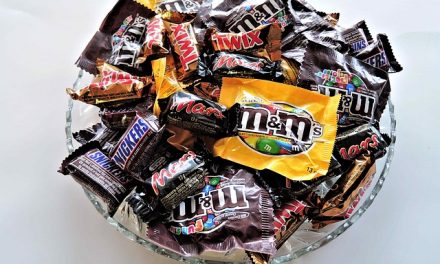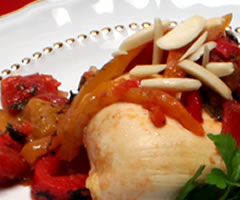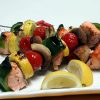The U.S. Department of Agriculture's new Dietary Guidelines call for some foods measured in cups. Eating the newly recommended two cups of fruit and two and a half cups of vegetables a day can make meeting this guideline simpler than figuring out servings per day.
When the government released its new guidelines, most people had been eating the equivalent of just one piece of fruit and a cup of vegetables a day. But the new guidelines make recommendations no-brainers.
It is easy to add fruit to your morning cereal, for example, and mix in diced fruit or berries when you eat yogurt or a dessert like sherbet or pudding. A brilliant taste trick with great health benefits is adding fruit to salads, muffins and quick breads.
You will be surprised how a sliced apple, chopped pear, or handful of grapes adds pleasing succulence and crunch to any combination of greens or baked goods. They add interest even when the fruit has bland flavor or is less than ideally ripe and juicy.
When chefs add vegetables to a plate, many of them try to create irresistible combinations such as creamy pureed spinach and wood-oven roasted tomatoes seasoned with fresh herbs and combined with grilled corn.
Mexican chefs take another route. At every single meal, Mexicans serve a simple fresh salsa made with tomatoes, jalapenos and onions. More than a zesty condiment, salsa is also a healthy veggie dish that can be eaten liberally. When you don't want to make it yourself, there are many good commercial versions, ranging from fiercely hot to comfortably mild.
Chefs have offered many ideas for variations on salsa. You can follow their lead by combining fruits and vegetables in an uncooked summer salsa, or adding roasted peppers seasoned with aromatic herbs to the usual ingredients. A full cup of either is easy to enjoy and sets you well on the way to meeting the new guidelines.
Avocado and Mango Salsa
Makes 3 cups or 12 1/4-cup servings.
Ingredients
- 1 ripe avocado, peeled and diced
- 1 cup chopped ripe mango
- 1 jalapeno pepper, seeded and finely chopped
- 1/2 cup chopped jicama
- Juice of 1 lime (2 tablespoons)
- Salt and ground pepper
- 1/4 cup cilantro leaves, chopped
Directions
- In a mixing bowl, combine the avocado, mango, jalapeno pepper, jicama, and lime juice. Season to taste with salt and pepper. Mix in the cilantro. Let the salsa sit 20 minutes for flavors to meld before serving.
Nutritional Information Per Serving:
35 calories,
2 g. total fat (less than 1 g. saturated fat),
4 g. carbohydrate,
less than 1 g. protein,
2 g. dietary fiber,
less than 1 mg. sodium
Diabetic Exchanges: 1 Vegetable, 1/2 Fat
Roasted Pepper Salsa
Makes 3 1/4 cups or 13 1/4-cup servings.
Ingredients
- 1 large roasted red bell pepper, seeded and chopped (see notes)
- 1 small yellow bell pepper, seeded and chopped
- 1 poblano pepper, seeded and chopped (see notes)
- 1 large tomato, seeded and chopped
- 2 scallions, green part only, chopped
- 1/2 cup chopped sweet onion
- 1/2-1 Tbsp. (or to taste) finely chopped fresh oregano, or 1/2-1 tsp. dried
- 1-2 Tbsp. fresh lime juice, according to taste
- Salt and ground white pepper, to taste
Directions
- In a mixing bowl, combine the red, yellow, and poblano pepper, the tomato, scallions, sweet onion, oregano, and lime juice. Let the salsa sit at least 20 minutes for flavors to meld. Before serving, season to taste with salt and white pepper to taste, if desired.
Nutritional Information Per Serving:
14 calories,
less than 1 g. total fat (0 g. saturated fat),
3 g. carbohydrate,
less than 1 g. protein,
1 g. dietary fiber,
2 mg. sodium
Diabetic Exchanges: 1 Vegetable
0
AICR








